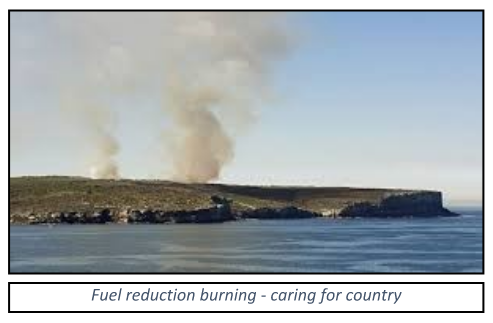It’s been a little while since the Tuross Head RFB has been sighted amongst the postings in The Beagle but that’s not to say we haven’t been busy.
Fuel reduction burning - caring for country
Rain and the cooler weather stopped play on the prescribed burns and hazard reductions that were progressively taking place in the autumn but hopefully with the dry weather we’ve been having it might be possible for them to resume before we once again find ourselves on the cusp of yet another hot, dry summer. We’d all be aware of the extent of indigenous burning in pre-European times right across Australia, but only quite recently has there been general recognition of the complex nature of this management and its sculpting of the environment to meet a myriad of purposes.

The dispossession of the land largely signaled the end of close management by fire and we know only too well the resulting vegetation changes and fuel loads in most of the native grasslands and forests. It’s heartening, then, to see the growing engagement of RFS with indigenous communities in activities like the seasonal burning of the Kianga/Dalmeny headland grass ecosystems. So when on those calm autumn and spring days, we notice columns of smoke rising from the bush across the Eurobodalla, it’s hopefully reassuring that people continue to care for country in ways that not only strive for safer summers but also recognise the respect and connection to the land under indigenous management for millennia.
Princes Highway blocked by MVA at night with NSW Fire and Rescue in attendance.
It’s been pointed out on numerous occasions in these pages that the callouts we dread most are to motor vehicle accidents (MVA’s). In the past month alone, the brigade has attended no fewer than three MVA’s, and in the final week of the month, on consecutive nights! In the latest event, it appears that the two-car collision might have been triggered by an encounter with a large kangaroo.

The dead wildlife along our Eurobodalla roads is ample evidence of the presence of these unpredictable animals close to the roads on which we travel. What might be a clear, straight, safe road during daylight hours, can be anything but that once night falls and the kangaroos and wombats are out and about. That also goes for roads right here in Tuross, where there are regular collisions with kangaroos on our village roads. It’s a no-brainer, but please, please, drive more slowly and keep a very sharp eye out along the edges of our roads after dark and in the early morning.
Peter Cole
June 2017




